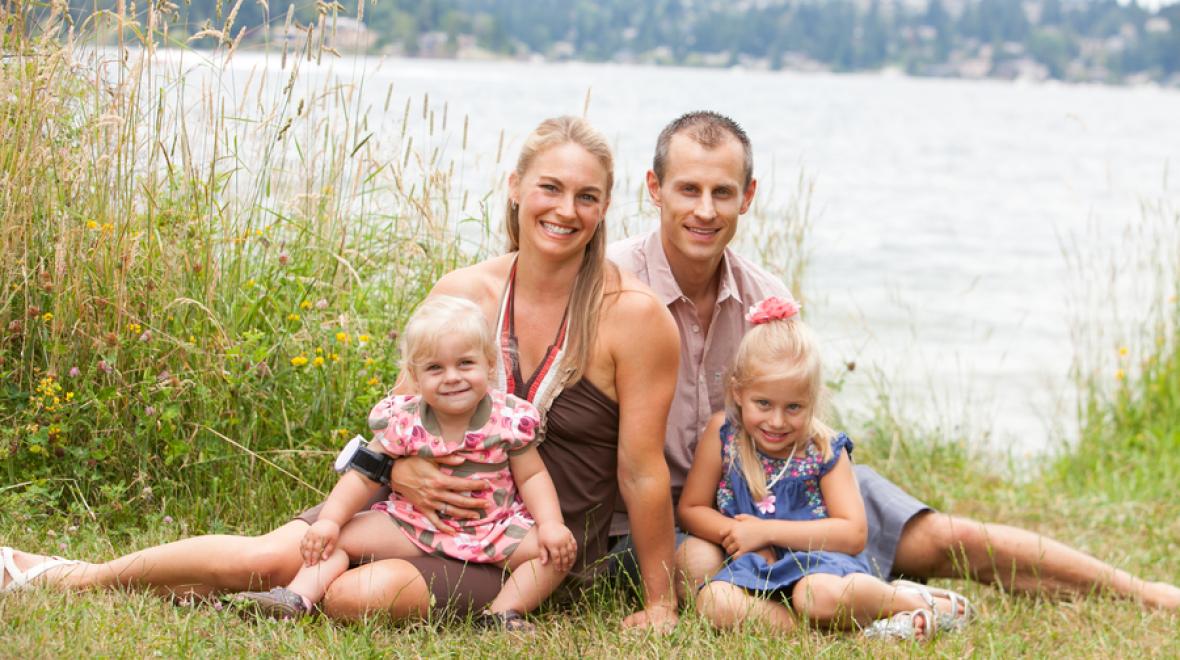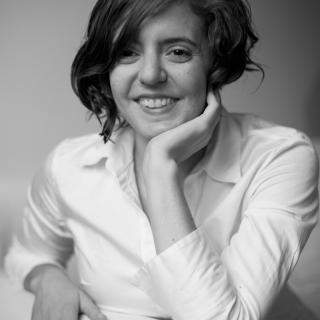
Photo:
The Magnuson family. Photo provided by Lisa Magnuson.
Erin McCloskey’s doctors were running out of options. The 12-year-old from Woodinville was in the pediatric intensive care unit at Seattle Children’s Hospital last summer with complications from a rare genetic disorder and she was in pain. But the opioids she was taking were becoming less effective as her tolerance for them increased.
Erin’s mother, Suzanne McCloskey, finally asked the doctors about something she never imagined wanting her daughter to use: medical marijuana.
“I threw up my hands and I said, ‘What’s this thing about CBD?’” she recalls, referring to the cannabis compound cannabidiol. “They were like, ‘Oh my god, we are so glad you said something.’”
The McCloskeys story is representative in many ways of the state of pediatric access to medical marijuana. More families are asking for it, in Washington and across the country, where 28 other states plus the District of Columbia and Guam have medical marijuana programs that grant some level of access for minors. Yet even in this state, where state law has allowed people to possess medical marijuana since 1998, families face serious obstacles to accessing something that many doctors see as a useful tool for managing nausea, seizures, pain or other conditions — but that they can’t prescribe.
Because the federal government considers marijuana a Schedule 1 drug — alongside heroin and LSD — medical research on the plant is limited. There are no widely accepted standards for its use, no large body of research to help doctors determine which patients can benefit and what doses work best. And that makes many doctors reluctant to offer it as a medical therapy.
Parents often are left to figure out for themselves what to buy — and where — with, if they’re lucky, help from doctors who are just beginning to learn what works and what doesn’t. Meanwhile, doctors and families alike operate under the specter of a federal crackdown by a Trump administration that has clearly signaled it won’t look the other way even on medical use.
Parents often are left to figure out for themselves what to buy — and where.
Washington created a much more heavily regulated medical marijuana program in 2016, which requires all patients under the age of 18 to be entered into a state database. Sixty-four minors were registered as medical marijuana patients as of Oct. 1, 2017, the most recent data available from the state Department of Health. When Erin McCloskey became one of them, her family started on a weeks-long process to determine which products at what dose worked best to control pain related to fibrodysplasia ossificans progressiva, a disorder that replaces soft muscle and connective tissue with bone.
Suzanne McCloskey scoured internet testimonials from other parents, trying to separate the good information from the bad, and consulted with Dr. Jeff Beck, a palliative care physician at Seattle Children’s who has become a point person within the hospital on marijuana use. Because doctors and nurses there aren’t permitted to administer marijuana, McCloskey learned to keep careful records of what she gave her daughter and its effects.
McCloskey had been opposed to giving her daughter medical marijuana because she worried about the effects on her developing brain. Early and persistent use of marijuana has been linked to poor memory and attention, and other emotional and behavioral problems.
“The one thing Erin has is her brain,” she says. “If FOP is going to take away her mobility, I didn’t want to do anything to have any damage to her brain.”
Five months later taking high-concentration CBD oil with a little bit of THC has helped Erin wean off the large amounts of morphine and other painkillers she once needed. Her daughter remains in the hospital and still requires lower doses of pharmaceuticals for pain control. But, McCloskey says, her pain is less and the family is starting to talk with doctors about a plan for discharging her.
“I don’t know what I was scared about,” McCloskey says. “She’s doing amazing. I am a complete supporter of it.”
The research on medical cannabis use in children and adolescents is thin. A systematic review published in the journal Pediatrics in November 2017 found just 22 studies that met standards for inclusion. Within those, the authors found insufficient evidence that medical cannabinoids are effective as pain relief, but good evidence that they can help with epilepsy and to control nausea and vomiting among patients undergoing chemotherapy.

Yet even cancer doctors report significant challenges in recommending medical marijuana to their patients. A separate study published in December 2017 surveyed 288 pediatric oncologists in Illinois, Massachusetts and Washington, where medical use is legal for minors.
Thirty percent said they had received at least one request for medical marijuana in the prior month. Nearly half said the absence of standards around drug formulations and dosing was a significant barrier to recommending it to patients. The authors of both studies say more research is critical, and especially necessary to help providers and families weigh possible benefits against the risks to neurocognitive development.
Pediatric oncologists are accustomed to families asking about alternative treatment options, but marijuana is different, says Dr. Prasanna Ananth, assistant professor of pediatrics at Yale School of Medicine and the lead author on the survey. It remains a federally prohibited substance with decades of research assessing its potential harm.
Many doctors see the value of medical use, Ananth says, but they want to feel confident that the risk-benefit ratio for their patients is not too high. “It’s really hard to know that without a lot of science backing us up,” she says. “It’s really just an unconventional approach to practice.”
Palliative care, it turns out, is one area of medicine where unconventional approaches are typical.
“We tend to work in the creative realms of medicine,” notes Beck of Seattle Children’s. “In that way, we are much more comfortable with gray, and we are much more comfortable with experimentation that seems safe. Marijuana falls pretty easily in that description.”
Doctors in Beck’s department frequently are brought in to consult with patients across the hospital who are interested in using medical marijuana. They tell families what they know so far, “which is a lot of anecdotal information, some science and a growing amount of experience in cases with patients we have worked with,” Beck says. For many families, especially those grappling with complex medical conditions or terminal illness, he says, the balance of benefits against possible risks make marijuana “very reasonable to try.”
The message on dosing for many is the same: Start with a low dose and increase slowly. The expanding marijuana market in Washington has made it easier to find products that work, Beck says. It used to be that CBD was available primarily as a sticky resin and Beck would direct patients to take the equivalent of half a grain of rice, for example — a dose that he says “sounds ridiculous.” Now, CBD tinctures can be carefully administered, and state law requires rigorous testing for products available to patients.
But cost is an issue for many patients: Particularly for patients who need high-dose oils, it can become expensive, fast. Beck says he would likely recommend marijuana more often if insurance covered it.
Lisa Magnuson estimates that it would cost her family up to $20,000 annually to buy medical marijuana to help control her 5-year-old daughter’s seizures. Instead, she and her husband, Myles, grow it themselves.
Magnuson first considered medical marijuana when her daughter Elin was 3 years old. She was taking several anti-epileptic drugs that made her “a zombie,” Magnuson says, but still having seizures. Doctors suggested another brain surgery, but they weren’t confident it would help. Magnuson began looking for someone who could help them access marijuana, eventually finding a naturopath who connected her with the owners of Solstice, a commercial producer. They pointed her to Ryan Day, a father from Edgewood who grows marijuana for his son, who has a type of epilepsy called Dravet syndrome.
The Magnusons did a trial run with commercial products, and Elin went a month without a seizure for the first time. Day helped the family start their own operation at their Bellevue home, with twice-a-year harvests of plants specifically chosen for their low-THC and high-CBD yields, and a 40-hour processing system that requires constant attention. The Magnusons send every batch out for testing.
It’s worth it. Elin is down to one anti-epileptic drug and “she is not a zombie anymore,” her mother says. The quality of their family life has improved, including for Elin’s 8-year- old sister, Anya, because they don’t have to measure every outing by the distance from the nearest hospital. Last summer they rented a boat for the season in the San Juan Islands. “We were able to get our life back,” Magnuson says.
She believes federal changes are urgently needed to free doctors to prescribe medical marijuana and allow insurers to pay for it.
“It was completely, basically, inaccessible to us without me advocating and trying to figure out the exact path,” she says. “Kids need access to this. What we have to do is ridiculous… to get the medicine that we should be able to go to the store and buy.”











